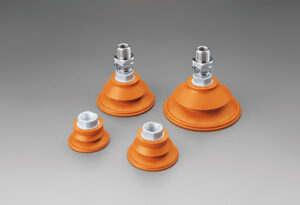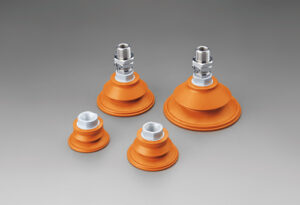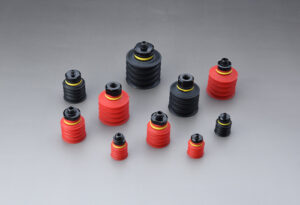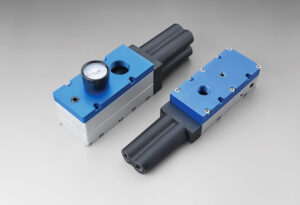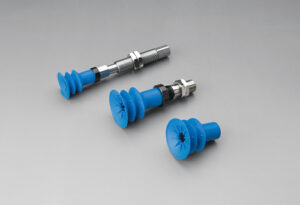Introduction:
Vacuum suction cups are versatile tools used in various industries for their ability to grip and handle objects securely. However, a common question is whether these suction cups can effectively function in a vacuum environment. In this article, we will explore the principles behind vacuum suction cups, their effectiveness in a vacuum, and address the concerns of potential buyers who require suction cups for vacuum applications.
II. Understanding Vacuum Suction Cups:
Vacuum suction cups operate based on the principles of atmospheric pressure. These cups have a flexible body and a sealing edge, creating a tight seal against the object’s surface. When a vacuum is created within the cup by evacuating the air, the external atmospheric pressure pushes the thing against the cup, creating a gripping force.
The gripping force generated by vacuum suction cups allows them to handle various loads and materials efficiently. The cups are commonly made from silicone, known for their flexibility, durability, and resistance to extreme temperatures.
III. Performance in a Vacuum:
Contrary to their name, vacuum suction cups do not use external atmospheric pressure to function effectively. Instead, they operate based on the pressure differential between the inside of the cup and the environment it is in contact with.
In a vacuum environment, where the pressure is significantly lower than normal atmospheric pressure, vacuum suction cups can still generate a gripping force. By evacuating the air from the cup, the pressure inside the cup becomes lower than the pressure outside, causing the cup to adhere tightly to the object’s surface.
It is important to note that while vacuum suction cups can work in a vacuum, their performance may be affected by factors such as the cup’s material, size, design, and the surface to which they are attached. Let’s explore these factors in more detail.
IV. Factors to Consider:
- Material Selection: The choice of material for the suction cup is crucial for its performance in a vacuum. Silicone is a commonly used material due to its flexibility and resilience. It can maintain a good seal even in challenging vacuum conditions. However, other materials like nitrile or polyurethane might be more suitable for specific applications. It is essential to consult the manufacturer’s guidelines or seek expert advice to ensure the chosen material is compatible with the vacuum environment.
- Size and Design Considerations: The size and design of the suction cup also play a significant role in its effectiveness in a vacuum. Larger suction cups generally provide a higher gripping force but may require a larger contact area on the object’s surface. Additionally, the cup’s shape and design should match the character to ensure optimal suction. Suction cups with bellows or multiple lips can adapt better to uneven or curved surfaces, enhancing their performance in a vacuum.
- Surface Compatibility: The surface to which the suction cup is attached is another critical factor. Different characters may require specific cup designs or additional accessories to ensure a reliable grip. For example, certain surfaces might need protective covers or specialized seals to prevent damage or provide a secure attachment. Understanding the characteristics of the character and its interaction with the suction cup will help ensure successful vacuum applications.
V. Addressing User Concerns:
As potential buyers of vacuum suction cups for vacuum applications, you may have specific concerns regarding their performance in a vacuum environment. Here are some common questions and their answers:
Q: Can vacuum suction cups generate enough gripping force in a vacuum?
A: Yes, vacuum suction cups can generate sufficient gripping force in a vacuum by creating a pressure differential between the inside of the cup and the low-pressure environment. The cups are designed to maintain a strong seal and provide reliable gripping capabilities.
Q: Are vacuum suction cups compatible with different vacuum levels?
A: Vacuum suction cups are designed to function effectively across various vacuum levels. However, extreme vacuum conditions or highly specialized applications might require specific cup designs or materials. It is essential to consult with manufacturers or experts to ensure the chosen suction cups are suitable for your particular vacuum requirements.
Q: Can suction cups lose their grip in a vacuum?
A: While vacuum suction cups are designed to maintain a secure grip, certain factors can affect their performance. These factors include the cup’s material, surface compatibility, and potential damage or wear over time. Proper selection, regular inspection, and maintenance can help ensure the continued effectiveness of suction cups in a vacuum.
VI. Conclusion:
In conclusion, vacuum suction cups are indeed effective in a vacuum environment. They operate based on the principles of pressure differentials and can generate a gripping force by evacuating the air from the cup. However, when purchasing vacuum suction cups for vacuum applications, it is crucial to consider factors such as material selection, size and design considerations, and surface compatibility to ensure optimal performance.
Users can confidently handle objects and achieve reliable results in a vacuum environment by selecting the proper suction cups and understanding their limitations and requirements.
Remember to consult with manufacturers, review guidelines, and seek expert advice to ensure the chosen suction cups meet your specific needs and provide the desired performance in a vacuum.
I hope this article has addressed your questions and provided valuable insights into the effectiveness of vacuum suction cups in a vacuum environment. Please let me know if you have any further inquiries or need additional information.



